If you’ve ever felt uncomfortable at your desk, your chair height might be to blame. Getting this right is one of the easiest ways to improve your comfort and posture. So, what is the standard chair height? Our team has created this simple guide to help you get started.
Why Chair Height Matters?
Getting your chair height wrong might seem like a small thing, but it can have a big impact on your body. When your chair isn’t at the right height, it forces your body into awkward positions that can lead to real discomfort over time.
Here’s what happens when your chair is too high or too low:
When your chair is too high:
- Your feet dangle, or you’re on your tiptoes
- This creates pressure on the back of your thighs
- It can cut off circulation and cause leg fatigue
- You might find yourself slouching to compensate
When your chair is too low:
- You’re looking up at your screen, straining your neck
- Your shoulders hunch up toward your ears
- You might lean forward, putting pressure on your lower back
- Your arms reach upward, causing shoulder tension

According to ergonomic guidelines from OSHA, proper chair height is one of the most important factors in preventing workplace discomfort. Studies have consistently found that ergonomic workstation adjustments (including setting the correct chair height) lead to measurable reductions in musculoskeletal discomfort.
Table: Common Problems from Wrong Chair Height
| Problem | What You Feel | Simple Fix |
| Feet not flat | Leg numbness, pressure on thighs | Lower chair or use footrest |
| Screen too high | Neck strain, headaches | Lower screen or raise chair |
| Arms not level | Shoulder pain, wrist strain | Adjust chair or armrests |
| Knees above hips | Lower back pressure | Raise chair height |
The right chair height helps maintain your spine’s natural curve and keeps your joints in a neutral position. This means your muscles don’t have to work overtime to keep you upright. It’s one of the easiest ways to make your workspace more comfortable and productive.
What Is the Standard Chair Height?
When it comes to choosing the right chair, one size definitely doesn’t fit all! To help you find the best fit, we’ve put together this handy chair height chart.
Note: Every person is unique, and comfort is a personal thing. While the height ranges shown in the table below are a great starting point, they should be used as a general guide to help you choose the right chair height for your needs. You can also use a chair height calculator to pinpoint the best measurements for your body and workspace.
| Your Height (feet) | Recommended Chair Height (Inches) | Your Height (feet) | Recommended Chair Height (Inches) |
| 4’11” | 13.5 – 16 | 6’1″ | 18 – 19.5 |
| 5’0″ | 14 – 16 | 6’2″ | 18.5 – 20 |
| 5’1″ | 14.5 – 16.5 | 6’3″ | 19 – 20 |
| 5’2″ | 14.5 – 16.5 | 6’4″ | 19 – 20.5 |
| 5’3″ | 15 – 17 | 6’5″ | 19.5 – 20.5 |
| 5’4″ | 15.5 – 17 | 6’6″ | 20 – 21 |
| 5’5″ | 15.5 – 17.5 | 6’7″ | 20 – 21.5 |
| 5’6″ | 16 – 17.5 | 6’8″ | 20.5 – 21.5 |
| 5’7″ | 16.5 – 18 | 6’9″ | 21 – 22 |
| 5’8″ | 16.5 – 18.5 | ||
| 5’9″ | 17 – 18.5 | ||
| 5’10” | 17 – 19 | ||
| 5’11” | 17.5 – 19 | ||
| 6’0″ | 18 – 19.5 |
What About Different Chairs?
1. Ergonomic Chairs
Ergonomic chairs are designed especially with long-term comfort and with support for those spending long hours at a desk.
These chairs typically feature adjustable seat heights within (16-21 inches), seat depth within (17-19 inches), also backrest height within (22-26 inches).
You are able to fine-tune it for a fit according to proper posture and spine alignment because they allow for that.
Adjustable armrests also exist with a width around 16-20 inches for different bodies.
2. Executive Chairs
These chairs are for the most part much bigger. They also feature more padding for added support.
Seat height often measures roughly 18 to 22 inches, also seat depth can reach almost 19 to 21 inches. For the gaining of a full back support, the backrest tends to be of a higher height (22-30 inches), and armrests are more typically 22-24 inches apart because they are more wide and are well-padded.
3. Conference Chairs
Conference chairs for sitting briefly are often designed more compactly along with simply.
Their seat height typically ranges from 17 to 20 inches since the seat depth is around 16 to 18 inches.
These chairs tend to size and as well as standardize in a uniform way so that they fit for users in comfort. And for sure, they lack the wide-ranging adjustability of ergonomic chairs.
4. Lounge Chairs
Lounge chairs are all about relaxation with a stylish way. They often exist within more casual office settings or lounge areas.
These chairs are often lower to the ground because they have a seat height from 14-18 inches and a deeper seat depth of 20-24 inches to permit comfortable lounging.
Office Chairs for Different Types
1. Best Office Chairs for Short People: Herman Miller Aeron (Size A)
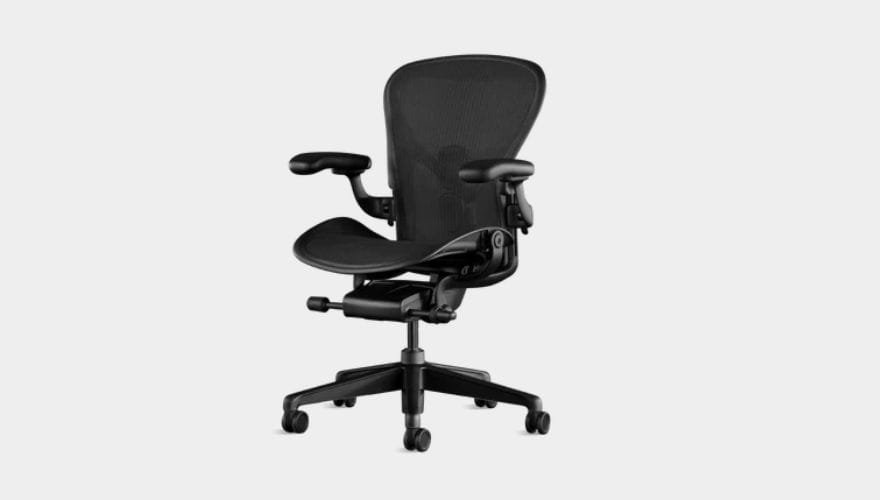
The Herman Miller Aeron (Size A) is a top choice for shorter individuals. One of the standout features of this chair is its seat height adjustment, which can be lowered as much as 14.4″.
Additionally, the Aeron Size A offers a well-designed seat depth, allowing for a snug fit that prevents discomfort during long hours of sitting.
This ergonomic office chair delivers with its broad range of adjustments, making it easier for shorter folks to find a healthy sitting posture.
Also see: A Guide on Best Office Chairs for Short People
2. Best Office Chairs for Tall People: Meet&Co Style Office Chair

The Style Chair is a great option for tall users. You can sit comfortably with your feet flat on the floor and their knees at a proper 90-degree angle.
The chair also has a high backrest that provides ample support for the entire back. Its adjustable headrest also offers extra support. With adjustable seat depth and lumbar support, the Style can be customized to fit taller frames perfectly.
Also see: Top 10 Best Office Chairs for Tall People.
3. Best Office Chairs for All Body Types: Steelcase Gesture
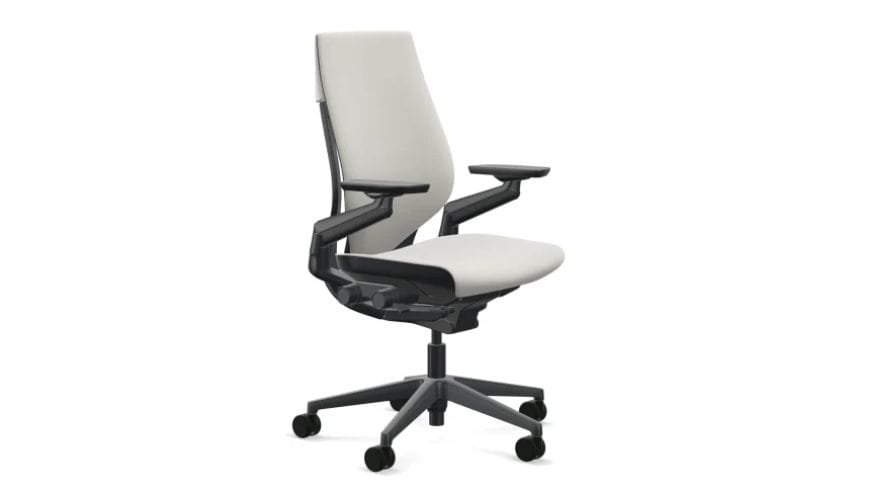
Steelcase Gesture offers a wide seat and high weight capacity, making it comfortable for users of all sizes.
The seat height can adjust from 16 to 21 inches. It offers plenty of flexibility to accommodate different leg lengths. The chair’s seat depth (21 – 23.625″) and adjustable lumbar support also make it easy to tailor the fit.
Additionally, the Gesture’s armrests are fully adjustable in width, depth, height, and angle, so they can accommodate a range of arm lengths and seating preferences. This level of flexibility makes the Gesture one of the best chairs for long hours too.
4. Best Office Chairs for Active Sitting (Standing Desks)
If you prefer to switch between sitting and standing frequently, an active sitting chair is a must-have. These chairs allow you to stay in motion while you work. It’s a good way to promote better posture and reducing strain. Meet&Co Ergonomic Stool and Focal Upright Locus Seat are great options for active sitters and standing desk users. The Meet&Co Ergonomic Stool offers dynamic support and comes with a footrest.
Also see: Top 10 Standing Desk Chairs
Simple Tips for Sitting Right
The Gold Standard: Neutral Spine Position
Think of your spine as having a natural “S” curve. Your goal is to maintain this gentle curve while sitting. When you achieve a neutral spine position, your muscles work less, and your joints experience minimal stress.
Quick posture checklist:
- Ears aligned over shoulders
- Shoulders relaxed, not hunched
- Lower back supported
- Hips slightly higher than knees
- Feet flat on floor or footrest
Table: Common Posture Mistakes & Fixes
| Mistake | What Happens | Quick Fix |
| Slouching | Puts 2-3x more pressure on spine | Use lumbar support or rolled towel |
| Forward head | Every inch forward adds 10 lbs of strain | Raise screen to eye level |
| Crossed legs | Reduces circulation, twists pelvis | Keep feet flat, use footrest if needed |
| Hunched shoulders | Causes neck and shoulder tension | Adjust armrests to support elbows |
Practical Tips for Better Sitting Habits
1. Use the 90-90-90 Rule
Aim for 90-degree angles at your hips, knees, and ankles. This position distributes weight evenly and reduces pressure points. If your chair doesn’t allow this, a footrest can help tremendously.
2. Support Your Lower Back
Your office chair’s lumbar support should fit snugly in the curve of your lower back. A small cushion or rolled-up towel help too.
3. Keep Arms Relaxed
Adjust armrests so your shoulders stay relaxed and your forearms parallel to the floor. If armrests force your shoulders up, it’s better to remove them entirely.
4. Take Micro-Breaks
No sitting position is healthy for hours on end. Set a timer to stand, stretch, or walk for 1-2 minutes every 30 minutes. These brief posture breaks help reset your body and improve circulation.
5. Move While You Sit
Static sitting is the real enemy.
- Shift your weight
- Adjust your position
- Use a chair that allows some movement
- Consider a height-adjustable standing desk
Even small changes help prevent stiffness and fatigue.
FAQs About Chair Height & Ergonomic Setup
1. How do I know if my chair is the right height?
Use the “90-degree test”: Sit with your feet flat on the floor, knees at 90 degrees, and elbows at 90 degrees when typing. If your feet dangle, lower the chair or use a footrest. If your knees are above your hips, raise the chair.
2. What if my desk is too high for any chair setting?
This is common! Try these solutions:
- Raise your chair and use a footrest to support your feet
- Adjust your armrests higher to bridge the gap
- Consider a keyboard tray that lowers your typing surface
- Use a standing desk converter for more flexibility
3. How often should I adjust my chair height?
Adjust whenever you feel discomfort, but at least:
- When switching between different shoes (heels vs flats)
- When different people use the same workstation
- Seasonally (winter shoes vs summer shoes can affect height)
- If you experience new aches or pressure points
4. Does chair height affect monitor placement?
Absolutely! Proper chair height determines your eye level:
- Top of monitor should be at or slightly below eye level
- You should look slightly downward at the screen
- If needed, use monitor stands or books to adjust height
5. What’s more important: chair height or desk height?
Both matter, but chair height comes first because it affects your entire posture. Set your chair correctly for your body, then adjust other elements (desk, monitor, keyboard) to match.
Also see: What is an Office Chair Butt? Prevention and Solutions
How to Create an Ergonomic Desk Setup












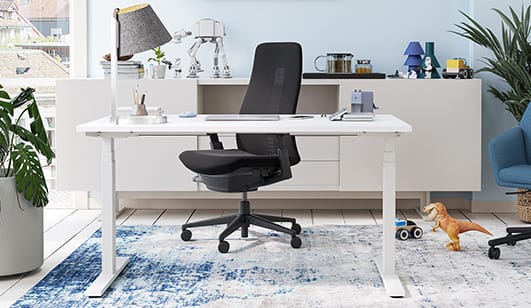





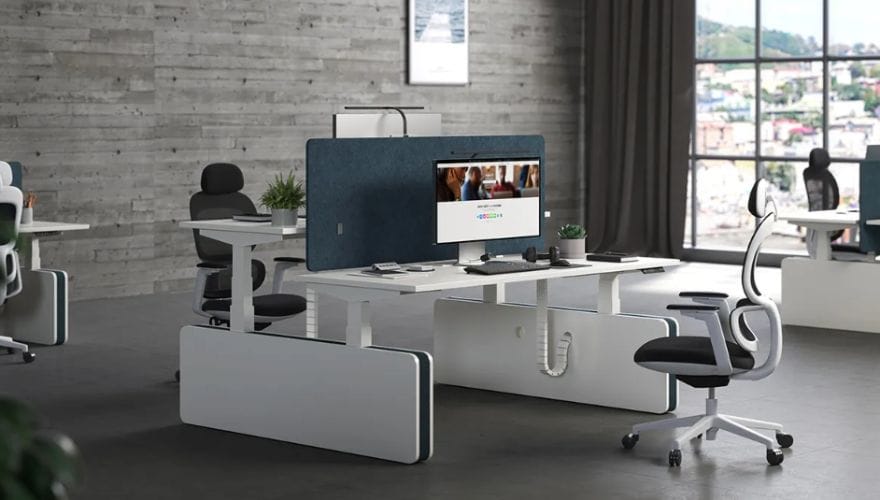


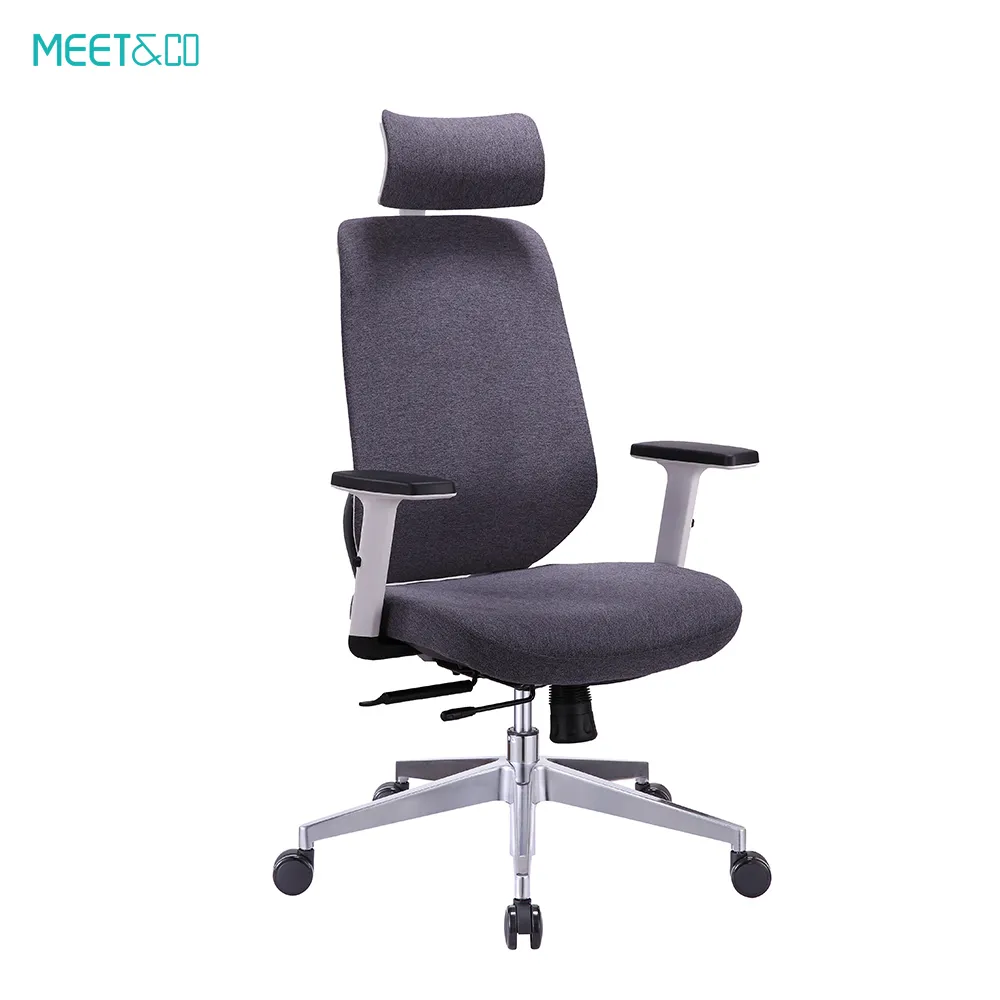
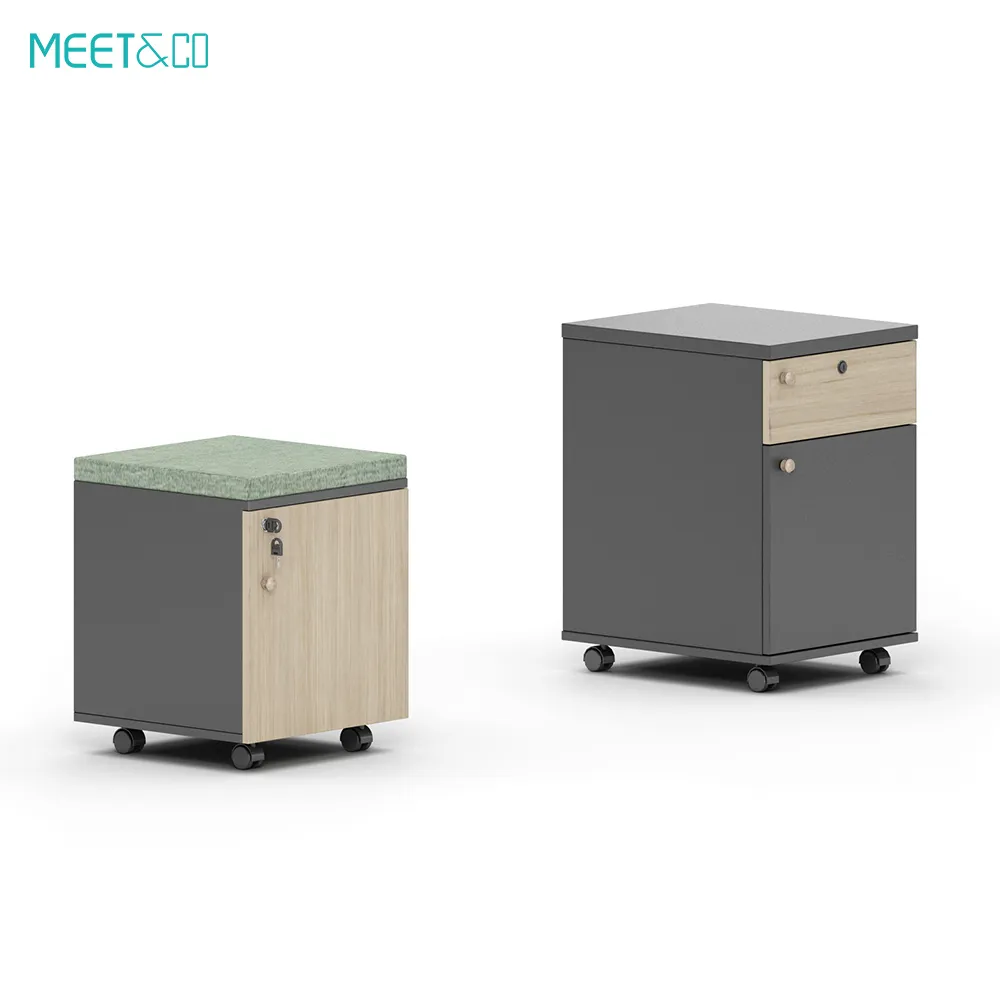
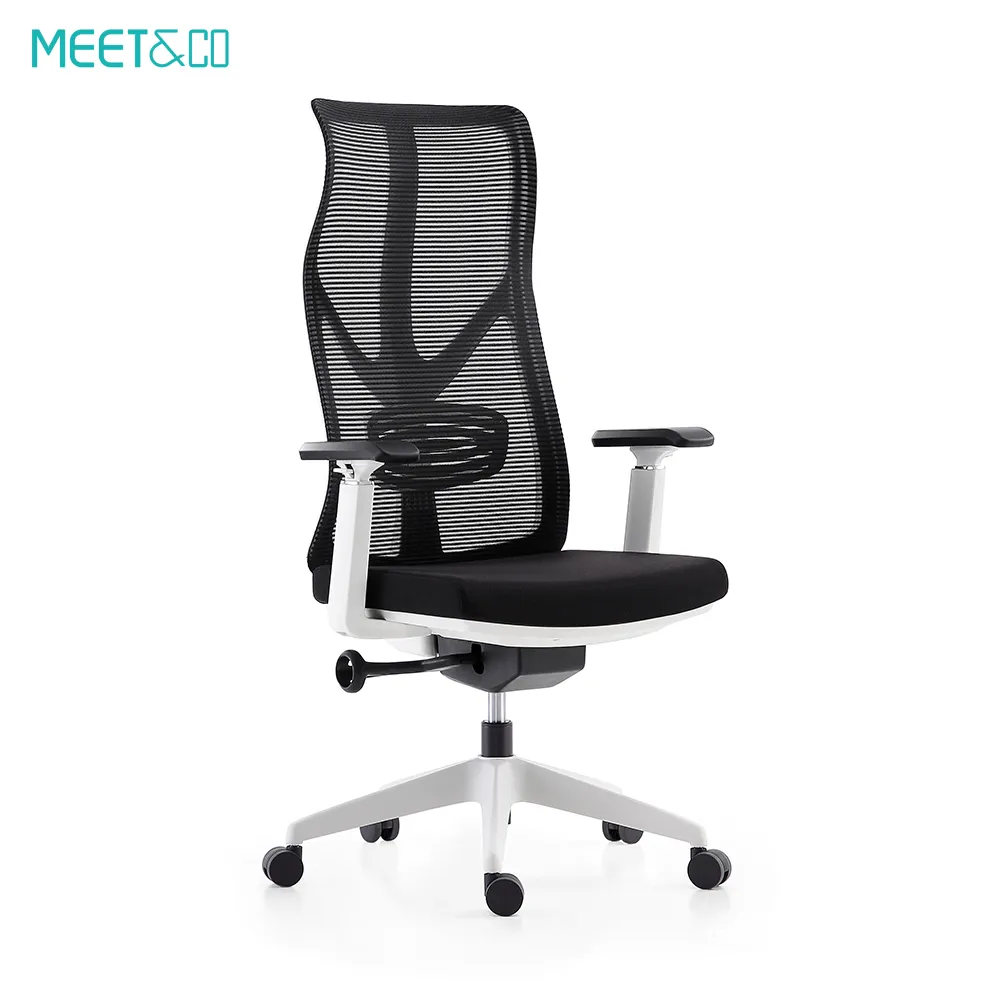
_1-1.webp)